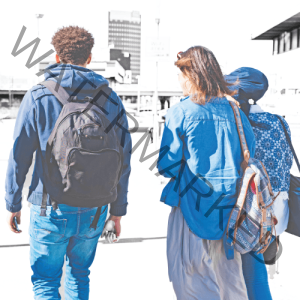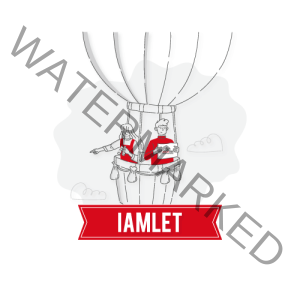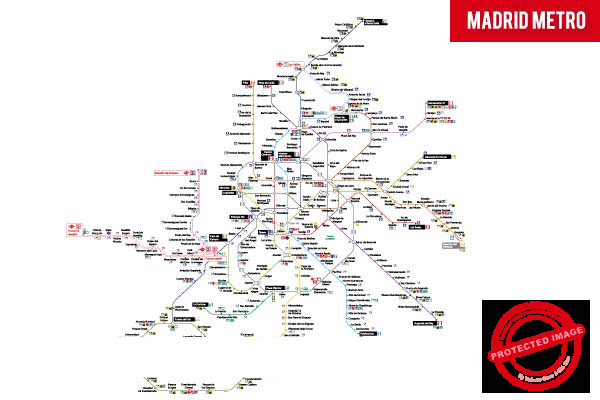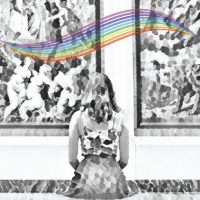
LGBTQIA+ Travel Guides:
Destination Madrid - Spain
- Atilla Tiriyaki
- Average Reading Time: 19 minutes
- Travel
- articles, atillat, guides
Located in Southern Europe, Madrid is a city, a municipality, and Spain’s capital. Madrid is the sixth-largest city in Europe, second after Berlin in the EU. In 2020, it has a population of 3.3 million in the city and 6.5 million in the municipality. It covers an area of 604.3 square kilometres or 233.3 square miles, with the Manzanares river running through the city’s centre. The city’s history dates back to the stone age. Its name is derived from either Arabic, Mozarabic or Celtic. All of the word’s possible meanings typically relate to water or streams. Castilian Spanish is the official language and dialect spoken amongst 76% of Spanish-born residents. Of the remaining residents, 24% typically emigrated from the Americas (around 16%), with the rest arriving from other European, Asian, and African countries.
Madrid is steeped in history, was once the centre of a vast empire and a place that has had a massive influence on the Hispanic and Spanish speaking world. The city is the birthplace of many of Spain’s monarchs and world-renown artists such as Francisco Goya, Pablo Picasso and Salvador Dali. Madrid over the years has been home to revolutionaries that were the figureheads of the independence movements in South America, such as Simon Bolivar and General José de San Martín. The city has been the backdrop for many important events in Spanish history, from failed coups to becoming an economic, cultural, industrial, and technological centre within the continent. Unlike other cities in Europe with three or four well known and recognisable landmarks, Madrid is different. The city itself is a landmark, and you need to capture the entire place to appreciate Madrid truly.
Some interesting facts you might not know:- The patron saint of Madrid is San Isidro, known as Isidore, the Labourer. San Isidro, a native of Madrid in 1070 AD, was canonised in 1619. He was a farmworker known for his devotion to the poor and animals. Interestingly, San Isidro was married to another Saint, Santa María de la Cabeza
- People from Madrid are called Madrileños (masculine) and Madrileñas (feminine)
- Madrid is 700 meters above sea level, with a Mediterranean climate, which means that the summers are warm, with dry and clear air winds from the mountains. The autumn and winter months are sunny and have an average temperature of 6 degrees Celsius or 43.6 Fahrenheit
- Madrid is home to three football teams, Real Madrid, Atlético de Madrid and Rayo Vallecano within La Liga. According to FIFA, Real Madrid is one of the most successful football clubs in the world
- Madrid has been the capital city for centuries; however, it was not always the case. It became the capital of Spain in 1561, which was then changed to the city of Valladolid from 1601 to 1606. The city changed hands over the centuries. It was reinstated as the capital of Spain in 1938 at the end of the Spanish Civil War and has remained the capital ever since
- Movie lovers can visit the Warner Brothers Theme Park (Parque Warner) in Madrid. The theme park is home to various attractions, restaurants and daily shows. Parque Warner is located south of Madrid (///inner.stocks.predict) close to the town of San Martin de la Vega. Prices start from 22.50 to 44.90 euros, and children whose height are below a specific size (100 centimetres) go in for free
- Bullfighting has been a popular event in Spain for centuries. Though controversial due to animal welfare concerns, Madrid is home to the most important bullring in Spain. The bullring can seat almost 25,000 people in a colosseum style ring, and events take place throughout the year
- Madrid is the fourth wealthiest city in Europe, after London, Paris and Moscow and the richest city in Spain. People living within Madrid earn an average salary of 42,819 euros each year
- The University of Salamanca, located in the western part of Madrid, was founded in 1134. It is the third oldest university in the world, behind the University of Bologna (c.1088) and The University of Oxford (c.1096-1167). The university is the oldest in the Spanish speaking world and amongst the world’s Hispanic universities
- Many empires have ruled Madrid over the years. The city was first ruled by the Roman Empire in the second century and then by the Moors until 1083
- Spain today has one of only twelve sovereign monarchies within Europe; however, Spain was a republic for many years following the Spanish Civil War. The monarchy and democracy were reinstated after the death of the dictator General Francisco Franco in 1978
- People from Madrid also have the nickname “Los Gatos”. The translated term means the cats. Some believe that the name is because people from Madrid share many characteristics with cats, such as intelligence, showing off, the love of sleeping, and going out day and night. The origins of the name relate to a soldier who climbed the fortress-like walled city of Madrid that was under Arab rule at that time. The soldier climbed the 12-metre high wall with just a dagger, removed the Arab flag and placed the Castilian King’s flag, which helped recover the city. The king said that the solider looked like a cat, and this is where the nickname originated
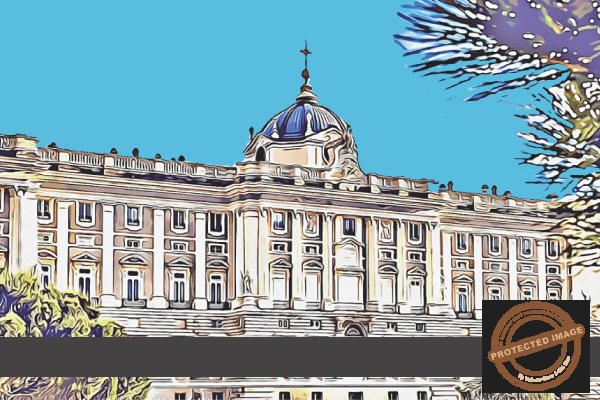
BY AIR
- Adolfo Suárez Madrid–Barajas Airport (///deserved.backed.skater – MAD (IATA) | LEMD (ICAO)) is an international airport within Madrid, the busiest airport in Spain and 6th busiest in Europe. The airport is located 13 kilometres or 8 miles northeast of the city centre, and the five terminals link Europe and Latin America. The national carrier (Iberia) accounts for 40% of all flights to and from the airport. As of August 2020, there were 193 regular routes to and from Madrid. There are several options for getting to and from the airport, with the most popular methods being by metro or train. The metro line 8 and train lines C1 and C10 offer direct routes into the city from all terminal buildings. Travelling by taxi to the city centre will incur a fixed fare of roughly 30 euros; however, all other destinations will be metered. Please note that it is essential to clarify with the driver that the fixed fare applies before getting into the taxi and after giving your destination. There have been situations where taxi drivers have charged more than the agreed fixed fee. Typically stating that the destination is outside the city centre or that some other surcharge applies (better to be clear upfront). Alternatively, there are many buses and shuttle bus services available within the airport terminals
BY SEA
- Madrid is inland and 339 km (211m) from the northern ferry terminal and 683 km (424m) from the southern ferry terminal. Though travelling to Madrid by sea is possible, you would likely have to spend many hours travelling by car or train to arrive at the city centre
- Europe to Spain – several options are available for travelling to Spain from Europe, and direct ferry routes exist between the UK and Spain. Car and foot passengers can travel from Portsmouth (///times.echo.expand) to Santander (///embodied.caskets.tricks) or Bilbao (///broadly.woof.sulkily), which takes from 24 hours to 32 hours or Plymouth (///value.encounter.lands) to Santander which has a journey time of under 19 hours. Madrid to Santander is 339 kilometres (211 miles), and a direct train takes under 5 hours. Madrid to Bilbao is 323 kilometres (201 miles), and a direct train also takes 5 hours. Visit the ferry operator, Brittany Ferries (https://www.brittany-ferries.co.uk/) for more information. There are other ferry routes into France; however, most would take between 10 to 24 hours to arrive in Madrid
- Africa to Spain – a ferry service travels between Spain and Morocco. There are a number of ferry routes, the most popular being Tarifa (///winks.jumbled.relaxing) or Gibraltar (///mats.float.cones) to Tangier (///slice.careful.damp) in Morocco. Two ferry companies run both a foot and car passenger service, which takes roughly 45 minutes each way. Travelling to Madrid takes approximately 683 kilometres or 424 miles from or to Tarifa and will take over 7 hours by car. Visit the FRS (https://www.frs.es/en/) or Intershipping (http://www.intershipping.es/en/) ferry companies for more information
BY TRAIN
- There are two main railways stations in Madrid, Atocha and Chamartin. All of the trains are operated by national rail company Renfe (https://www.renfe.com/)
- Madrid Atocha railway station (///look.tunes.tropic), which faces Plaza del Emperador Carlos V, is the largest train station in Madrid and one that connects the city to the rest of the country and France. There are frequent and high-speed trains connecting Madrid to Girona, Tarragona, Barcelona, Sevilla, Malaga, Andalusia, Valencia, Alicante and Marseille in France
- Madrid Chamartín railway station (///sued.sunroof.denser) close to Plaza de la Infancia and is the second-largest train station and connects Madrid to parts of Spain as well as Portugal. Frequent high-speed trains connect Madrid to Segovia, Valladolid, Leon and Lisbon in Portugal
Interactive Airport Terminal Maps
- The Madrid Metro is 293 kilometres (182 miles) long and connects all parts of the city. The metro is comprised of 13 lines, 302 stations and runs from 6 am until 1.30 am each day. To travel on the Madrid Metro, you will need first to obtain a TTP (Tarjeta Transporte Publico) known as a Multi-Card. You can get the card at various licensed selling points throughout the city or at any of the automatic ticket machines found within any one of the Metro or Light railway stations. The card costs 2.50 euros; once you have the card, you will then be able to purchase your desired ticket or fare. Visitors to the city can buy a Tourist ticket for either zone A or zone T and any duration from one day up to seven days. The zones and number of days will depend on where you plan to visit. For example, Zone A covers the city of Madrid only, requiring a surcharge for travelling to and from the airport. Zone T includes all zones (A to C). For a Zone A ticket, the cost per person ranges from 8.40 euros for one day up to 35.40 euros for seven days. A zone T ticket ranges from 17 euros for one day to 70.80 euros for seven days. For more information, visit the Madrid Metro website (https://www.metromadrid.es/en/travel-in-the-metro/fares-and-tickets/tickets#panel4)
- The Madrid EMT (the Municipal Transport Company) is made up of over 200 bus lines and over 2,000 vehicles. The bus service connects the city to the wider municipal area, and buses typically run from 6 am to 11.30 pm. The bus company offers a downloadable bus map, showing visitors the bus routes closest to the city’s famous landmarks. The map can be downloaded by visiting the EMT Madrid website (https://www.emtmadrid.es/Ficheros/PlanoTuristico.aspx). A single bus fare costs 1.50 euros, similar to the Madrid Metro; you will need to purchase a TTP (Tarjeta Transporte Publico) known as a Multi-Card before you travel. You can buy the card at various licensed selling points throughout the city or at an automatic ticket machine found in the Metro or Light railway stations. The card costs 2.50 euros; once you have the card, you will then be able to purchase your desired ticket or fare. The Tourist Tickets, available from one to seven days and for the various zones, can also be used on the buses throughout the city. For more information, visit the EMT Madrid website (https://www.emtmadrid.es/ViajarenBus/Titulosytarifas)
- The official and licenced taxis within Madrid can be identified as white with a diagonal red band on the front doors of the cab, which also bears the emblem of the city. Anyone of the almost 16 thousand Taxis can be hailed throughout the city or from several taxi ranks found around the city. The taxi ranks can be found by the blue sign with a white letter T. Taxis are metered and accept cash and credit card payments. The minimum journey fare is 2.40 euros on Mondays to Fridays from 6 am to 9 pm and 2.90 euros for all other times. The fare will increase based on the distance travelled or a fixed price per hour. Taxis fares to and from the airport are fixed when arriving in the city centre at 30 euros. Uber and other Radio taxi firms also operate throughout the city
Interactive Madrid Metro
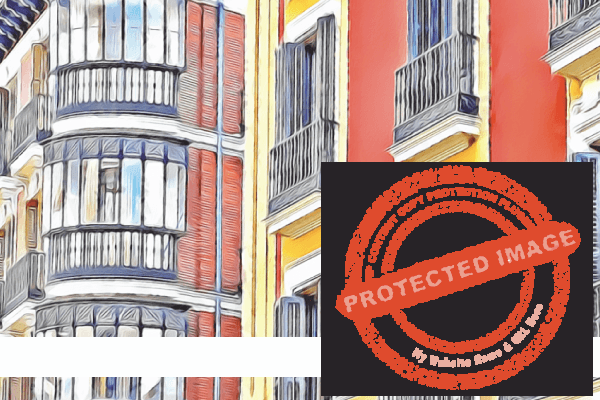
- The Gran Via is often referred to as the Spanish Broadway and is home to the city’s most important shopping areas. A large number of hotels and short-term rental apartments are located within this central location. The Hotel Vincci Via 66, located at Gran Via, 66 (///email.puppets.smelter), is a contemporary designed hotel in the centre of the city. The hotel has 66 air-conditioned and elegant rooms, boasts a roof terrace with city views, a restaurant and a bar lounge. The hotel is close to all of the major attractions, and the average cost for a room is 130 dollars per night. For more information, visit the hotel’s website (https://www.vinccihoteles.com/eng/hotels/spain/madrid/vincci-via-66)
- The Chueca and Salesas district of Madrid, with its narrow streets, is the home of the city’s gay community. Close to all famous attractions and fantastic nightlife, this area has a lot to offer visitors. The Only YOU Boutique Hotel Madrid is located on Calle Barquillo 21 (///suppers.less.freezing) and is set within a stunning 19th-century mansion. The 125-room hotel offers luxury in the centre of Madrid, and services include 24-hour room service, 24-hour gym and early check-in/late checkouts. This stunning boutique hotel is modern yet compliments the former mansion, packed full of colonial features. The average cost for a room per night starts from 130 US dollars. To find out more, visit the hotel’s website (https://www.onlyyouhotels.com/en/hotels/only-you-boutique-hotel-madrid/)
- Plaza de España is a large and famous square in the centre of Madrid. The Plaza features a monument to Miguel de Cervantes Saavedra and is close to the Palacio Real (Royal Palace). The Espahotel Plaza de Espana located on Plaza Espana 7 (///event.reply.escaping) offers affordable accommodation in a central location. The 86-room hotel offers spacious and modern rooms, each with a kitchenette and the hotel services include a 24-hour reception, bar, cafeteria, and room service is also available. The hotel has four room types (Studio, Studio with an extra bed, Triple and Premium) and offers discounts when you book direct. The average cost per night is 80 US dollars, and you can find out more about the hotel by visiting their website (https://www.espahotelplazaespana.es/en/)
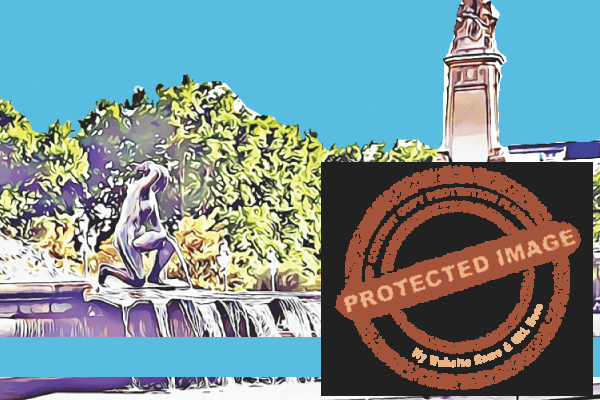
- Museo del Prado (///margin.ports.impulses) is the main Spanish national art museum and is home to one of the finest art collections in the world. The Museum has thousands of drawings, paintings, prints, and sculptures. The collection features the work of the national artist Francisco Goya and other well-known artists such as El Greco and Peter Paul Rubens. Located at Calle de Ruiz de Alarcón, 23, tickets cost from 7 to 15 euros per person. The Museum is open from 10 am to 8 pm on Mondays to Saturdays. The Prado is available to visitors from 10 am to 5 pm on Sundays and during holidays
- Retiro Park (///school.smoothly.pipe) is a large and popular park in the centre of Madrid. The park covers an area of 350 acres or 1.4 square kilometres. It is home to many sculptures, monuments, galleries, and a large artificial lake. One of the famous sculptures found within the park is the Fuente del Ángel Caído, which features a statue of the devil. The sculpture has made Madrid the only city in the world with a statue depicting the devil. The park and crystal palace are free to visitors. Visitors can hire rowing boats, available for 5.80 euros during weekdays and 7.50 euros during weekends. Alternatively, there is a sizeable solar-powered boat that costs 1.50 euros for a single ride
- Chocolatería San Ginés (///lipstick.waters.mess) has become a famous landmark and destination within Madrid. Founded in 1894 and open 24 hours a day, the chocolateria is renowned for its pots of chocolate to dip the churros within. Madrid loves churros, which can be found throughout the city, day and night; however, a visit to the chocolateria is an experience in its own right. The cafe is located in Pasadizo San Ginés, 5 and offers a dine-in, takeaway, and delivery option. During non-covid times, the restaurant is busy, and dining in can be difficult. You can reserve by calling or emailing the café (https://chocolateriasangines.com/contacto/), or you will increase your chances of being seated by visiting during off-peak times, such as before lunch (11 am) or mid-afternoon (3 pm)
- National Archaeological Museum (///gifts.chipper.puddles) is home to many archaeological and decorative art collections obtained by the Spanish monarchs throughout the years. The collection is from the Iberian Peninsula and dates from Prehistory to the early-modern age. The Museum is located at Calle de Serrano, 13 and is free to visit. The Museum opens from 9.30 am until 8 pm from Mondays to Saturdays, and 9.30 am until 3 pm on Sundays
- Gran Via (///boils.vets.popping) translated means the Great Way is a street in Madrid that runs from Calle de Alcalá down to Plaza de España. The road is often referred to as the Spanish Broadway and is home to the city’s main shopping areas and hotels
- Mercado San Miguel (///soils.wedding.refers) is one of the world’s main gastronomic markets. The market has been around for more than 100 years. Visitors can sample the finest hams, fresh fish, shellfish and other delicacies, dishes, and desserts from all over Spain. Located in Plaza de San Miguel, the market is home to over thirty different vendors. The market is open from 10 am until 11 pm on Mondays, Thursdays, and Sundays and from 10 am to 1 am on Fridays, Saturdays and during holiday periods. For more information, visit the official website (https://mercadodesanmiguel.es/en/)
Madrid is one of the world’s best destinations for the global LGBTQIA+ community. The city hosts the annual pride event each year in June known as Orgullo Gay de Madrid, one of the most attended pride parades in Europe and typically holds the third spot for most attended LGBTQIA+ events in the world. Historically, Spain was considered conservative, which is still true in some parts of the country; however, not within the capital. Madrid has a thriving community, typically in and around one of the nicest districts known as Chueca. The residents of Madrid are known to be welcoming and gay-friendly. They were also the third country globally to legalise same-sex marriages as a nation. Madrid has a popular nightlife culture, with many cafes, restaurants, bars, and clubs situated around the Malasaña and Chueca districts. It is fair to say that if you identify as LGBTQIA+, Madrid is both an exciting and accepting city to visit.
To see Madrid’s famous landmarks and attractions, you will need at least four days; however, if you want to see more of Spain, using Madrid as a base can be a great way to explore. With an extensive railway and bus network throughout the country and daily and frequent internal flights, you can quickly discover Spain’s unique towns, cities, and regions. Spain is a diverse country with five languages (Galician, Spanish, Basque, Catalan and Occitan) and 17 areas, each with its own cultures, customs and unique identities. Much of the diversity can be found and sampled in the city. If you want to spend more time in Madrid and still discover more about Spanish culture, you can within Madrid.
People who have visited Madrid often feel like they know a secret, a place on earth that is not as featured and known as it should be. Madrid has been the centre of many prominent and historical events. From the Spanish Inquisition of 1478 to the end of the Spanish Civil War in 1939, Madrid has been a much sought-after city and jewel in the Spanish crown. The city deserves to be known by the world and should be featured heavily at the top of any city breaks list. It might not have one or two instantly recognisable landmarks that define its landscape. However, when you visit Madrid, you quickly realise that the streets and buildings are unique, making it understated.
A Spanish proverb states, “Three Spaniards, four opinions.”; however, I am confident that all would agree that Madrid is both a fantastic and must-see city to visit




